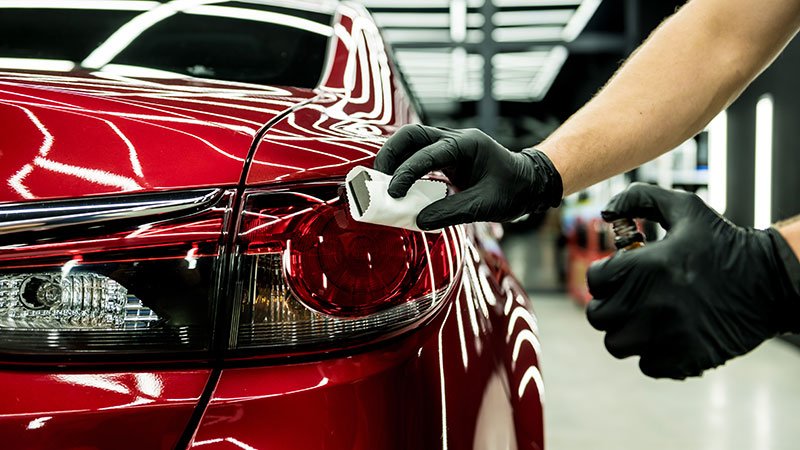Get premium car detailing for a showroom shine.
Get premium car detailing for a showroom shine.
Blog Article
A Comprehensive Guide to the Types of Ceramic Covering on the Market
Ceramic finishings have arised as a pivotal option throughout numerous industries due to their distinct properties and applications. As we check out the distinct attributes and applications of these finishings, the effects for performance and longevity come to be significantly obvious, increasing inquiries about which type might finest match your demands.
Recognizing Ceramic Coatings
Ceramic finishings are sophisticated protective solutions that have gained popularity in numerous sectors, specifically in vehicle and aerospace applications. These layers are composed of a fluid polymer that, when treated, forms a durable, hydrophobic layer externally of the substrate. This layer gives boosted resistance to ecological impurities, UV radiation, and chemical direct exposure, therefore expanding the life and visual allure of the underlying product.
The fundamental part of ceramic finishings is silica, which adds to their firmness and sturdiness. The application procedure usually entails surface area prep work, application of the covering, and healing, which can be attained through warmth or UV light. When cured, ceramic layers display outstanding bonding homes, allowing them to stick strongly to a variety of surface areas, including steels, plastics, and glass.
In enhancement to their safety features, ceramic coverings also offer convenience of maintenance. Their hydrophobic nature decreases the adherence of dust and grime, making cleansing simpler and much less frequent. On the whole, the adoption of ceramic coatings represents a significant improvement in surface area security modern technology, providing both practical and visual benefits throughout several sectors.
Kinds of Ceramic Coatings
Numerous sorts of ceramic coverings are offered, each designed to satisfy particular performance requirements and applications - Auto Detailing. The most common types consist of:
Silica-based Coatings: These finishes largely contain silicon dioxide and are known for their sturdiness and chemical resistance. They are commonly made use of in vehicle and industrial applications.
Titanium Dioxide Coatings: Distinguished for their photocatalytic properties, titanium dioxide finishes are usually applied in settings where self-cleaning and antifungal residential properties are preferable, such as in structure materials and automobile surfaces.
Zirconia Coatings: Defined by their high-temperature security and thermal resistance, zirconia finishes are used in applications such as wind turbine engines and high-performance automobile components.
Alumina Coatings: Exhibiting exceptional hardness and thermal stability, alumina coverings are regularly made use of in wear-resistant applications, consisting of reducing devices and industrial equipment. - scratch repair sarasota
Crossbreed Coatings: Combining the buildings of numerous products, crossbreed finishes use boosted performance features, making them appropriate for unique and requiring applications.
Each sort of ceramic finishing serves distinctive objectives, allowing users to choose one of the most suitable solution based upon particular environmental problems and performance needs.
Advantages of Ceramic Coatings
Coatings play an important role in enhancing the efficiency and longevity of surfaces throughout numerous sectors. Ceramic coverings, particularly, offer various benefits that make them progressively prominent among manufacturers and consumers alike. One of the key benefits is their outstanding sturdiness. These coatings are resistant to scratches, chemicals, and UV rays, guaranteeing that the underlying surface remains protected with discover here time.
In enhancement to longevity, ceramic coverings provide superb hydrophobic properties, permitting very easy cleaning and upkeep. This water-repellent nature decreases the adherence of dust, grime, and various other contaminants, which can extend the aesthetic appeal and capability of the surface. Ceramic finishes can considerably enhance thermal resistance, making them suitable for applications that endure high temperature levels.

Application Process
When applying ceramic layers, a precise approach is crucial to accomplish optimal outcomes. A clean surface ensures proper attachment of the finishing.
Once the surface area is prepped, the next action is to apply the ceramic layer. This can be done making use of an applicator pad or a microfiber fabric, making certain even insurance coverage. It is important to work in small areas to keep control and protect against premature healing. The covering should be used in slim layers, as thicker applications can bring about irregular surfaces.
After application, the finishing calls for a particular curing time, usually ranging from a few hours to a complete day, depending on the item. Complying with these actions vigilantly will take full advantage of the performance and long life of the ceramic covering, offering a sturdy safety layer for the surface.
Maintenance and Longevity
To guarantee Read Full Article the long life and effectiveness of a ceramic finish, regular maintenance is essential. Ceramic finishes, understood for their longevity and protective high qualities, require certain treatment regimens to maximize their lifespan and efficiency.
Along with normal washing, regular evaluations are vital. Look for indicators of wear or damage, such as hydrophobic properties reducing or surface area flaws. If required, a light gloss might be applied to revitalize the layer without removing it away.
Additionally, the application of a booster spray can boost the layer's hydrophobic effects and restore its gloss. This is particularly advantageous for finishings that have been in usage for an extensive period. Inevitably, by sticking to these maintenance practices, one can significantly expand the life of a ceramic finishing, making sure that it remains to give optimum additional reading protection against ecological variables and maintain the visual charm of the automobile.
Conclusion

Report this page